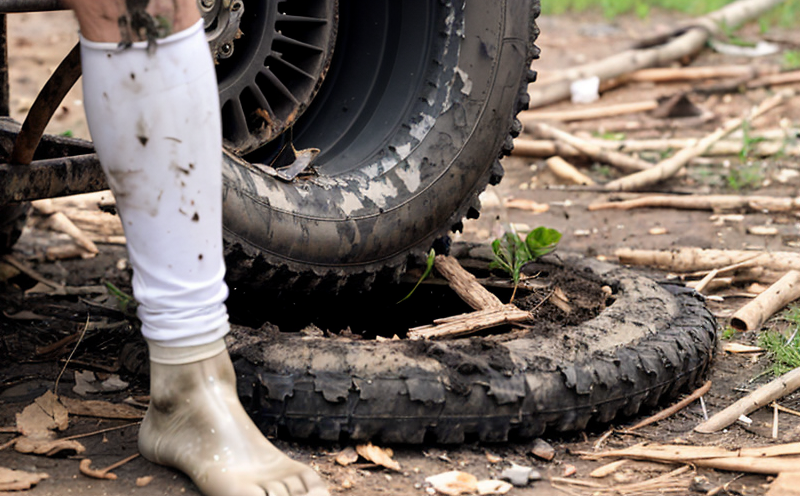EN ISO 6270-1 Humidity Testing of Paints and Coatings
In the realm of building and infrastructure testing, environmental durability testing is a critical component to ensure that materials used in construction can withstand various environmental conditions. The EN ISO 6270-1 standard specifically addresses humidity resistance testing for paints and coatings. This service is essential for quality managers, compliance officers, R&D engineers, and procurement professionals who need to verify the durability of their products under simulated weathering conditions.
The EN ISO 6270-1 standard provides a standardized approach to evaluating how well paints and coatings perform when exposed to high humidity. This type of testing is particularly important for ensuring that materials used in environments where moisture levels are high, such as coastal regions or industrial facilities, will maintain their integrity over time.
The process involves subjecting the paint or coating samples to controlled humidity conditions. The test specimens are placed in a chamber with adjustable relative humidity and temperature settings. Over an extended period, typically weeks or months depending on the specific requirements of the standard, the samples are exposed to these conditions. During this exposure, changes in properties such as adhesion, flexibility, gloss, colorfastness, and resistance to chemical attack are monitored.
The instrumentation used for EN ISO 6270-1 testing is sophisticated and precise. The humidity chamber must maintain tight control of both temperature and relative humidity levels, often within narrow tolerances defined by the standard. Specimen preparation involves ensuring that each sample is representative of the product being tested, which may require careful cleaning or priming to eliminate potential sources of error.
After exposure, the samples are carefully evaluated according to predefined acceptance criteria outlined in EN ISO 6270-1. These criteria specify allowable changes in various properties post-exposure compared to pre-exposure conditions. Failure to meet these criteria indicates that the paint or coating does not adequately resist humidity and may perform poorly under real-world conditions.
The importance of this testing cannot be overstated, especially for products intended for use in challenging environments. For instance, coastal buildings often face exposure to salt-laden air and high humidity levels, which can accelerate deterioration if not properly protected by suitable coatings. By adhering to EN ISO 6270-1 standards during development and quality assurance processes, manufacturers can ensure that their paints and coatings meet rigorous performance expectations.
The results of these tests are reported in a comprehensive manner detailing the exposure conditions, any changes observed in the properties of the samples, and whether or not they comply with the acceptance criteria. This information is invaluable for developers seeking to improve product formulations, as well as for quality assurance teams responsible for certifying products before release into the market.
Understanding the intricacies of EN ISO 6270-1 testing helps stakeholders make informed decisions about material selection and product design. Compliance with this standard not only enhances the reliability of construction materials but also contributes to overall sustainability efforts by reducing waste and extending service life.
Industry Applications
The application of EN ISO 6270-1 humidity testing extends beyond just paints and coatings. It is particularly relevant for various industries where environmental factors play a significant role in material performance:
- Civil Engineering: Ensures that infrastructure materials used in coastal or tropical regions can withstand prolonged exposure to high humidity, reducing maintenance costs and extending the lifespan of structures.
- Automotive Manufacturing: Validates that paints on vehicles are resistant to moisture-related degradation, ensuring aesthetic appeal and long-term durability.
- Renewable Energy: Supports the development of coatings for solar panels and wind turbine blades that can perform reliably in humid climates.
- Consumer Products: Guarantees that household items like appliances and electronics have protective finishes that maintain their integrity over time.
In each of these sectors, compliance with EN ISO 6270-1 helps manufacturers produce products that meet or exceed global quality standards, thereby enhancing customer satisfaction and brand reputation.
Quality and Reliability Assurance
The primary goal of EN ISO 6270-1 humidity testing is to provide robust evidence that paints and coatings will maintain their performance characteristics under specified environmental conditions. This assurance is vital for several reasons:
- Compliance with Regulations: Many regions have regulatory requirements mandating compliance with international standards like EN ISO 6270-1, ensuring that products are safe and effective.
- Consumer Confidence: Assurance of quality through rigorous testing builds trust among consumers who rely on these products for protection against environmental elements.
- Cost Savings: By identifying potential issues early in the development process, companies can avoid costly rework or recalls later on.
- Innovation: The insights gained from thorough testing contribute to ongoing improvements in formulation and application techniques.
A successful EN ISO 6270-1 test demonstrates that a company adheres to best practices in quality assurance, providing tangible benefits for both the manufacturer and end-users of these products.
Environmental and Sustainability Contributions
The pursuit of sustainability is increasingly becoming a priority across all industries. EN ISO 6270-1 humidity testing plays an important role in achieving this goal by:
- Promoting Longevity: By ensuring that paints and coatings can endure harsh environmental conditions, the use of these products contributes to reducing waste associated with premature failure.
- Reducing Resource Consumption: The durability provided by EN ISO 6270-1 compliant materials means less frequent repainting or recoating, thereby conserving resources such as raw materials and energy used in manufacturing processes.
- Eco-Friendly Formulations: Testing helps identify environmentally friendly alternatives that perform well under adverse conditions without compromising on performance.
In summary, compliance with EN ISO 6270-1 not only enhances product quality but also supports broader sustainability goals by promoting efficient resource use and reducing environmental impact.





